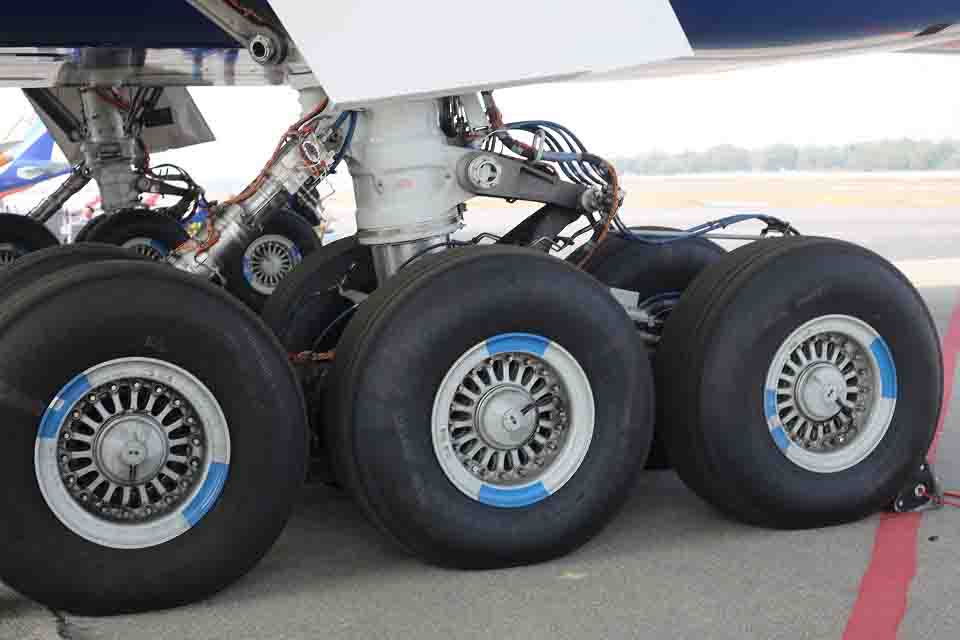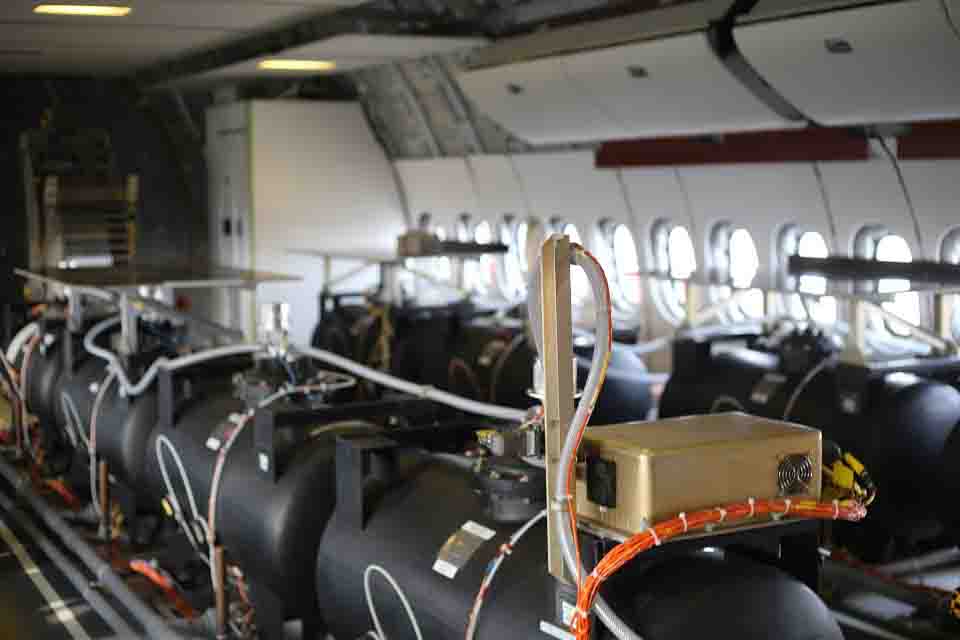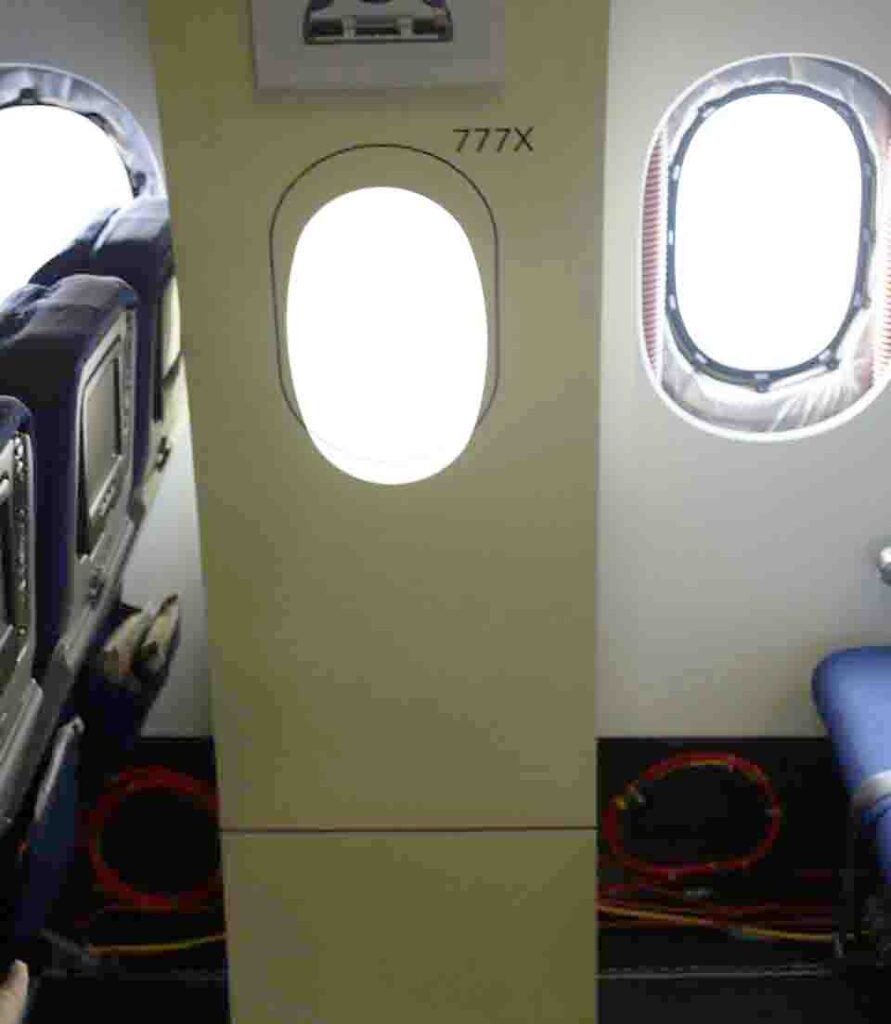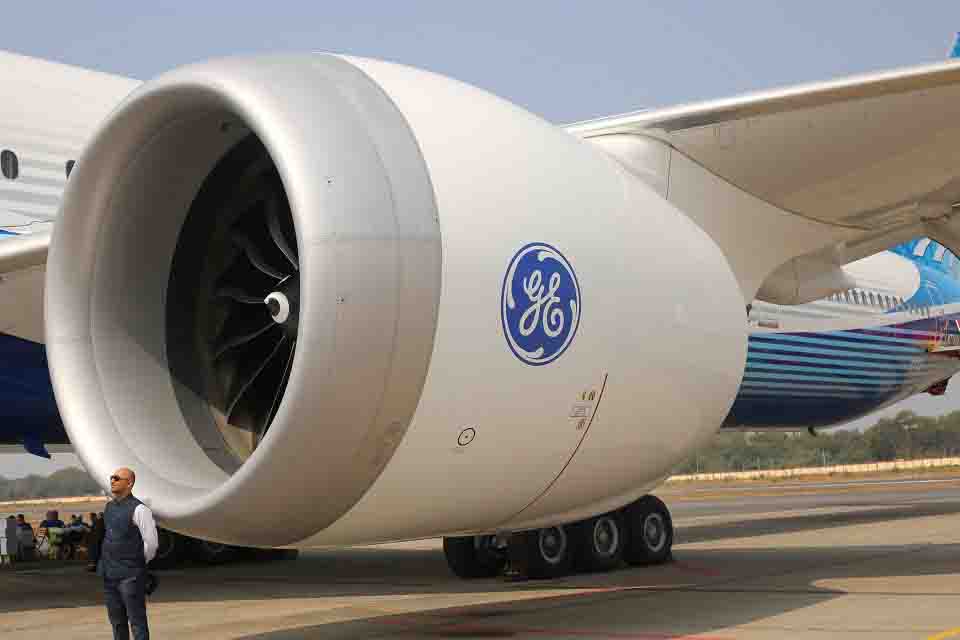Aviation
Exploring the Boeing 777x: Highlights from the Debut at Wings India
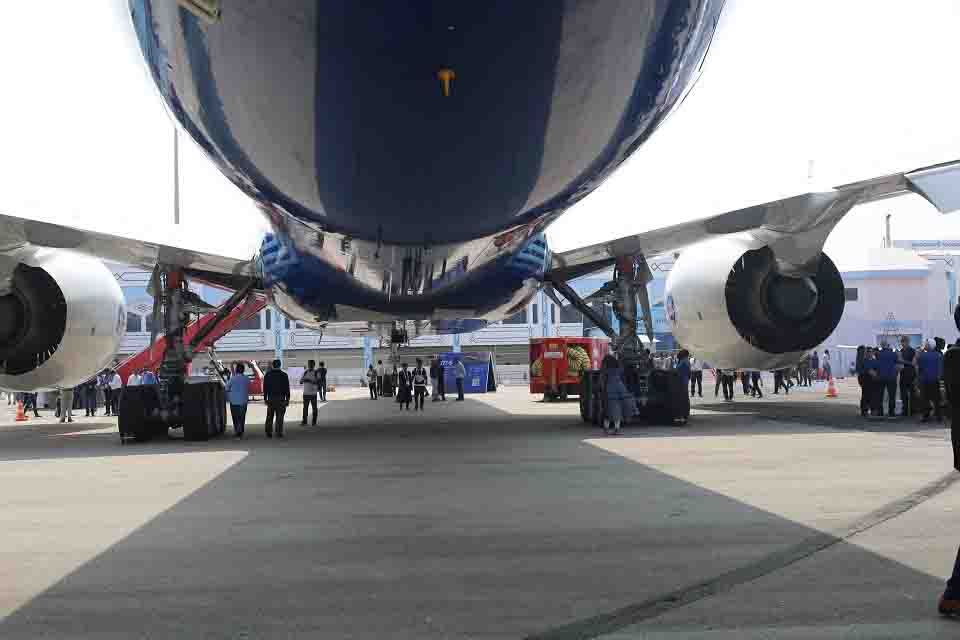
Boeing unveiled its Boeing 777x at Wings India for the first time after securing an order from India. We were thrilled to receive a warm welcome during our visit to Boeing at Wings India and had several inquiries.
During our tour with Jetline Marvel, we explored the Boeing 777x, delving into its interior cabin and inspecting the aircraft’s exterior. The Boeing staff at Wings India were exceptionally friendly.
As we strolled around the aircraft at Wings India, we noted its massive landing gears, reminiscent of those on the Boeing 777-300er. However, these were connected with new devices inside the brakes and an enhanced version of landing gears. An orange-colored wire was linked to various sensors located on the landing gears, displaying the aircraft system for testing and ensuring reliability.
Moving on to the wings, we observed the impressive wing structure made predominantly of composite materials, marking it as the largest wing for any commercial aircraft ever built.
Notably, the Boeing 777x boasts a wing-tip folding option, similar to the wing-folding feature found in the Fighter jet F18 aircraft. This innovation allows the aircraft to be efficiently parked on flight decks, enhancing aerodynamic efficiency and reducing fuel consumption.
Experimental aircraft
The tail wing of the Boeing 777x is equipped with cameras positioned in the middle, providing views of the landing gears and other critical areas during emergencies. Additionally, a camera is fitted just before the nose landing gear for continuous aircraft monitoring.
Entering the aircraft, we discovered a comfortably cool interior with minimal seating. The focus was on instrumentation and equipment arranged for monitoring the aircraft’s flight conditions, with some seats strategically placed in different surrounding areas.
The aircraft is equipped with ballistic water tanks to balance weight ratios during flights. b777 vs b747 tanks are located both inside the cabin and at the front portion, ensuring optimal balance throughout the aircraft.
a350 vs 777
In comparison to the boeing 777 vs airbus a350, the Boeing 777 features windows that are notably larger in size, providing passengers with an expanded and more panoramic view of the surroundings during the flight.
Boeing 777x has a Larger window
The Boeing 777X boasts larger windows compared to the Airbus A350, providing passengers with enhanced views, as evident in the accompanying image. Boeing asserts that these windows offer more expansive views than those of competing aircraft. According to reliable sources, these windows will feature an Automatic Brightness System, similar to the one found in the Boeing 787 aircraft.
Boeing 777x Engine
The Boeing 777x engine has set a world record, generating an impressive 134,300 pounds of thrust, capable of lifting a colossal 351.5-tonne aircraft with its twin engines. General Electric (GE) embraced the challenge of constructing such a massive-scale engine, surpassing the size of any other aircraft engine, a necessity to accommodate the substantial payload capacity.
Boeing 777x can 550 passengers
According to the Boeing team, this test flight is a rare occurrence driven by demand. Notably, the aircraft can accommodate 550 passengers, making it Boeing’s largest-ever aircraft. Currently undergoing certification, the aircraft is expected to be operational before 2025. Emirates Airlines is set to be the first operator of the Boeing 777X.

Aviation
Boeing, Antonov to Collaborate on Defense Projects

– MOU represents Boeing’s commitment to work with Ukrainian industry
– Includes exploring opportunities for collaborating on in-country support of Unmanned Aerial Systems
A Memorandum of Understanding was signed today by Boeing and Antonov Company to investigate potential collaboration on defense-related projects.
“We’re happy to keep collaborating with the Antonov Company to help Ukraine’s economic development and expansion,” stated Ted Colbert, CEO and president of Boeing Defence, Space, & Security.
Airbus and the Antonov An-225: The Best Partnership:Click here
“This agreement demonstrates our ongoing efforts to find more opportunities to work with Ukrainian industry, which was underscored by our signing of the Ukrainian Defence Industry Compact earlier this year.”
The areas of potential collaboration identified in the agreement consist of training, logistical support and overhaul services for tactical Unmanned Aerial Systems utilized by the Ukrainian Armed Forces, which includes the ScanEagle. In addition, the companies will also explore opportunities for Antonov to provide engineering support to Boeing.
The six largest cargo aircraft ever built in the aviation industry:Click here
“A strong, innovative, and efficient defense industry is key to sustainable economic development and national security, and we are extremely excited to collaborate with Boeing,” said Ievhen Gavrylov, CEO of Antonov Company.
This agreement brings a whole new level of opportunity to implement the latest and most effective solutions – in addition to the possibility of future projects with Boeing in the aerospace and defense industry.”
-

 Travel1 week ago
Travel1 week agoAir India to Expand US Operations with Three New Routes After a Decade
-

 Travel2 weeks ago
Travel2 weeks agoWhy We Should Avoid These Stamps in a Passport
-

 Airlines1 month ago
Airlines1 month agoInvestigations Reveal Fake Chinese Titanium in Boeing and Airbus Jets
-

 Tech4 weeks ago
Tech4 weeks agoChina’s CATL Plans 1,800-Mile Electric Plane Launch by 2027
-

 Airport3 days ago
Airport3 days agoTop 10 Largest Airports in the World by Size
-

 Aerospace4 weeks ago
Aerospace4 weeks agoChina’s Fighter Jets Turn Wings into Autonomous Drones
-

 Airlines4 days ago
Airlines4 days agoAir India Rolls Out A350s for Delhi-New York JFK and Newark Routes
-

 Defence3 weeks ago
Defence3 weeks agoBoeing Enhances Chinook with New Engines and Block II Upgrades at $96 Million

